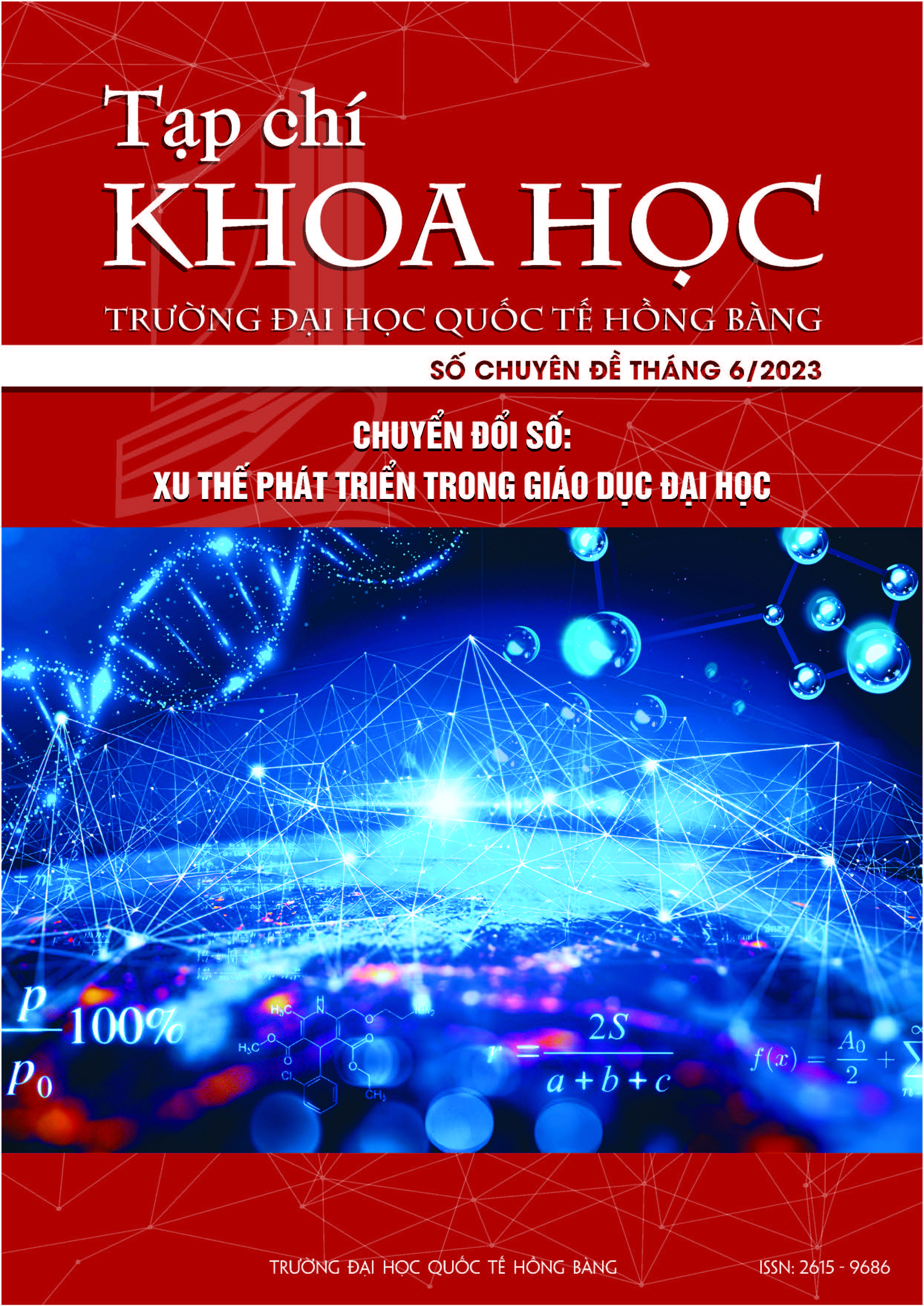Phương pháp thiết kế Hệ thống thông minh hỗ trợ học Toán cấp Trung học cơ sở
Các tác giả
DOI: https://doi.org/10.59294/HIUJS.CDS.2023.375Từ khóa:
hệ thống thông minh trong giáo dục, biểu diễn tri thức và suy luận trên máy tính, hệ hỗ trợ tra cứu – truy vấn kiến thức, hệ thống hỗ trợ giải bài tập thông minhTóm tắt
Một ứng dụng thông minh hỗ trợ học tập toán cấp Trung học cơ sở có vai trò rất ý nghĩa trong cuộc cách mạng chuyển đổi số nói chung, trong giáo dục nói riêng. Hệ hỗ trợ học tập thông minh phải có các chức năng giúp học sinh tự ôn luyện, tìm kiếm, tra cứu kiến thức theo sự phân loại, đặc biệt là khả năng hỗ trợ giải bài tập tự động và đưa ra lời giải từng bước, mang tính tự nhiên, sư phạm trong giáo dục. Có nhiều ứng dụng hỗ trợ học tập trong giáo dục, tuy nhiên các ứng dụng này chỉ đáp ứng các chức năng riêng lẻ, chưa có sự kết hợp các chức năng lại cùng với nhau để tạo thành một hệ thống tổng thể. Để thiết kế được hệ thống trên, đòi hỏi cần sự kết hợp từ nhiều kỹ thuật, phương pháp, đặc biệt là các phương pháp biểu diễn tri thức và các thiết kế dữ liệu theo mô hình cơ sở dữ liệu quan hệ. Bài báo sẽ trình bày phương pháp thiết kế hệ thống, dựa trên sự kết hợp đơn giản giữa các cơ sở tri thức thủ tục, cơ sở tri thức các đối tượng tính toán và các cơ sở dữ liệu, cùng các vấn đề kỹ thuật liên quan, từ đó xây dựng hệ hỗ trợ học tập kiến thức trong môn toán cấp Trung học cơ sở.
Abstract
An intelligent application supporting mathematics learning at the secondary school plays a significant role in the overall digital transformation specifically in education. An intelligent learning support system must have functionalities that enable students to practice and search for knowledge through categorized information, particularly with the ability to provide automated problem-solving assistance and step-by-step solutions that are natural and pedagogical in the educational context. Currently, there are various educational learning support applications available; however, these applications only fulfill individual functionalities without integrating them into a comprehensive system. Designing such a system requires the combination of multiple techniques and methods, especially knowledge representation and problem-solving inference methods on computers, as well as data design following the relational database model. This paper presents a system design methodology based on the combination of procedural knowledge bases, computational object knowledge bases (COKB), and relational database models, along with technical considerations. This design aims to create an intelligent system that supports mathematics learning at the Secondary School. The system is designed under a client-server architecture, allowing users to access it through the Internet environment.
Tài liệu tham khảo
[1] Emmis Communications, The Alcalde, University of Texas at Austin, ISSN: 1535-993X. 1973.
[2] Brenman R.L., Educational Measurement (4th edition), ACE/PRAEGER series on Higher Education, 2006.
[3] Tom Kubiszyn, Gray Borich, Educational Testing and Measurement: Classroom Education and Practice (10th edition), New York: John Wiley & Sons, Inc, 2013.
[4] L.W. Anderson, D.R. Krathwohl, P.W. Airasian, K.A. Cruikshank, R.E. Mayer, P.R. Pintrich, J. Raths, M.C. Wittrock, A Taxonomy for Learning, Teaching, and Assessing: A revision of Bloom's Taxonomy of Educational Objectives, New York: Pearson, Allyn & Bacon, 2001.
[5] Thanh T. Mai, Hien D. Nguyen, Trung T. Le, Vuong T. Pham, “An Intelligent Support System for the Knowledge evaluation in high-school mathematics by Multiple choices testing”, The 5th NAFOSTED Conference on Information and Computer Science (NICS 2018), pp. 284-289, 2018.
[6] Nguyễn Đình Hiển, Đỗ Văn Nhơn, “Mô hình tri thức toán tử và Ứng dụng xây dựng hệ hỗ trợ giải bài toán thông minh”, Tạp chí Khoa học và Công nghệ, Viện Hàn lâm Khoa học và Công nghệ Việt Nam, Tập 52, số 4D, trang 60-76, 2014.
[7] Hatzilygeroudis and J. Prentzas., "Knowledge Representation Requirements for Intelligent Tutoring Systems", Seventh International Conference on Intelligent Tutoring Systems. Lecture Notes in Computer Science, vol. 3220, pp. 87-97, 2004.
[8] Eduardo Guzmán, Ricardo Conejo, “A Model for Student Knowledge Diagnosis Through Adaptive Test”, Seventh International Conference on Intelligent Tutoring Systems. Lecture Notes in Computer Science, vol. 3220, pp. 12-21, 2004.
[9] Nhon V. Do, Thanh T. Mai, “Development of reasoning techniques on knowledge representation model COKB and Applications”, Proceeding of 2016 IEEE International Conference on Knowledge and Systems Engineering, 2016.
[10] Do, N., Nguyen, H., Mai, T, “Intelligent Educational Software in Discrete Mathematics and Graph Theory”. Proceedings of 17th International Conference on Intelligent Software Methodologies, Tools, and Techniques, pp. 925 - 938, 2018.
[11] Nhon V. Do, Phat V. Huynh, “Variation of COKB Model for Solving Problems about Chemical Elements”, Proceeding of 2015 IEEE International Conference on Knowledge and Systems Engineering (KSE), ISBN: 978-1-4673-8013-3, Ho Chi Minh, Vietnam, 2015.
[12] Phan Đức Chính (chủ biên) và các tác giả, Toán 6, 7, 8, 9 (Tập 1-Tập 2), NXB Giáo dục Việt Nam, 2021.
Tải xuống
Tải xuống: 47












